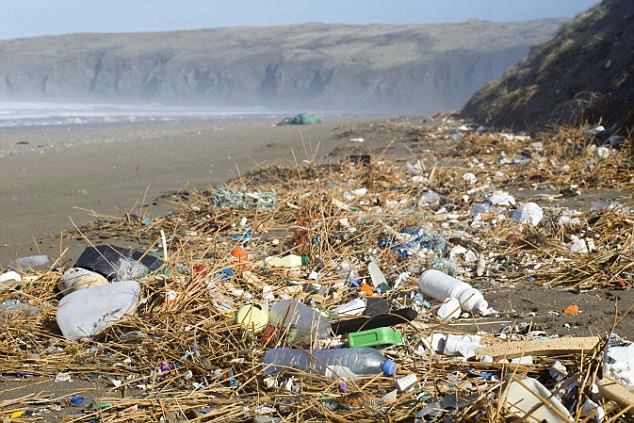Syllabus
GS 3: Environmental Pollution
Context: The presence of endocrine disruptors in plastic waste has raised serious health concerns due to their ability to interfere with the hormonal system.
Key fact

- A 2022 study from Vrije Universiteit Amsterdam found microplastics in the blood of 80% of people tested.
- In 2024, a study in India showed microplastics in 89% of blood samples with 4.2 particles per milliliter on average.
- These tiny plastic particles have also been found in human lungs, hearts, placentas, breast milk, ovaries and semen.
- Shockingly, Indian men had three times more microplastics in their testicular tissue than dogs.
- A 2023 study in Food and Chemical Toxicology found that even small amounts of polystyrene microplastics (20 μg/L) in animals lowered testosterone, reduced sperm production and damaged the protective barrier in the testes.
- In India, average sperm count has dropped by 30% over the last 20 years.
About Endocrine Disruptor
- Endocrine disruptors are chemicals that interfere with the hormonal system, leading to adverse health effects in humans and wildlife.
- Plastic waste is a major source of such disruptors, making it an emerging environmental and public health concern.
- They interfere with the body’s normal hormone signals in three main ways:
- Mimicking Natural Hormones: Endocrine disruptors (like BPA, phthalates, and PFAS) can bind to hormone receptors (such as estrogen, androgen, thyroid, and cortisol receptors), sending false signals that can overstimulate the system.
- Their molecular structure closely resembles our natural hormones, so they act like imposters
- Blocking Receptor Binding: These chemicals can also latch onto receptors and block real hormones from binding, preventing the receptor from receiving its normal signal. This effectively shuts down the communication pathway.
- Altering Hormone Levels and Metabolism: Endocrine disruptors may interfere with hormone production, transport, release, or breakdown.
- For example, they can increase or decrease hormone levels by affecting enzymes, transport proteins, or even how receptors are produced.
- Mimicking Natural Hormones: Endocrine disruptors (like BPA, phthalates, and PFAS) can bind to hormone receptors (such as estrogen, androgen, thyroid, and cortisol receptors), sending false signals that can overstimulate the system.
Plastic Pollution in India
- India produces over 9.3 million tonnes of plastic waste every year.
- Out of this, 5.8 million tonnes are burned, releasing harmful gases and 3.5 million tonnes pollute the environment.
- People in cities like Mumbai are exposed to 382 to 2,012 microplastic particles daily through air, food and water.
- In Nagpur, doctors report a rise in early puberty, breathing problems, obesity and learning issues in children—conditions linked to plastic pollution.
- CPCB tests found phthalates in drinking water from Delhi, Jabalpur and Chennai with levels above EU safety limits.
- India has strong policies like the Plastic Waste Management Rules (2016, updated in 2022 and 2024) but enforcement is weak and uneven.
- Current rules do not consider low-dose chemical effects or the special risks faced by children and pregnant women.
Mains Question
Plastic pollution is emerging as a major public health crisis in India. Examine its impact on human health and evaluate the effectiveness of existing regulatory measures. (10M, 150W)

